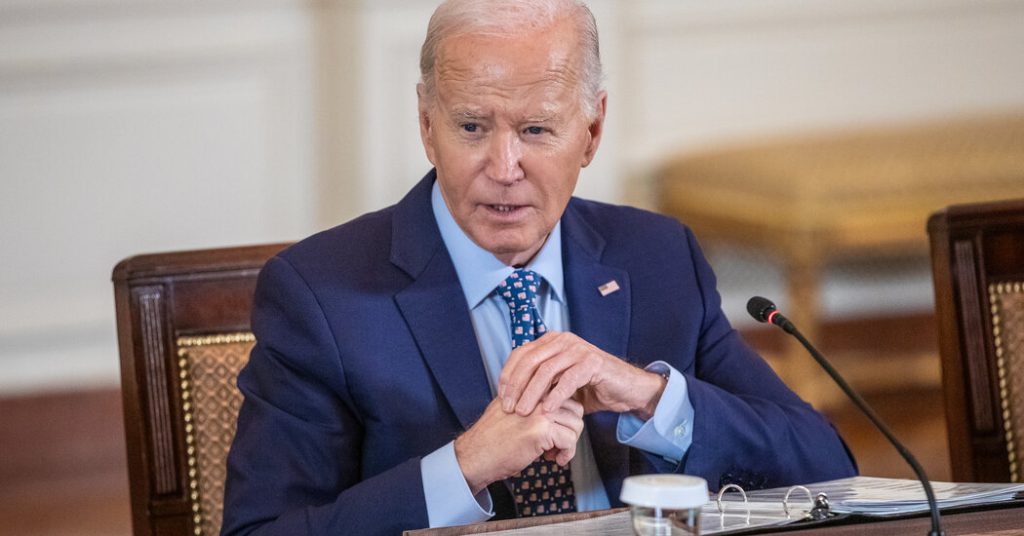President Biden issued an executive order that restricts migrants from seeking asylum at the U.S.-Mexico border when crossings reach a certain threshold, a move to address voter concerns and relieve pressure on the immigration system. This policy, which would only be implemented during surges in illegal crossings, is the most restrictive border measure introduced by Mr. Biden or any other modern Democrat, reminiscent of a 2018 attempt by former President Trump that was blocked by federal courts. Under the order, border officers would be allowed to return migrants to Mexico or their home countries within hours or days once the seven-day average for illegal entries surpasses 2,500 per day.
Immigration advocates and the American Civil Liberties Union have signaled their intent to challenge the executive order in court, arguing that it violates the rights of asylum seekers. The new system aims to deter illegal crossings by restricting access to the asylum process until the number of daily crossings falls significantly below the threshold. Limited exceptions include unaccompanied minors, victims of human trafficking, and those who schedule an appointment with a border officer through a Customs and Border Protection app. However, for the most part, the order suspends the long-standing policy of allowing anyone who reaches U.S. soil to apply for asylum.
The shift in U.S. immigration policy reflects a broader move towards more conservative border measures amid increasing illegal crossings and backlogs in the asylum system. Survey data suggests support from both parties for stricter border controls, previously criticized by Democrats and championed by Mr. Trump. The executive order mirrors a bipartisan bill that failed in Congress due to Republican opposition, preventing Mr. Biden from securing more resources for border security and immigration judges. The administration has faced criticism for not taking earlier action at the border, with Republicans skeptical of the timing and effectiveness of the order.
President Biden’s decision to restrict asylum marks a dramatic reversal from his previous stance against Trump-era policies that limited asylum seekers’ access to the U.S. Once a vocal critic of Trump’s border restrictions, Mr. Biden now faces political pressure to address the surge in unauthorized crossings and backlog in asylum cases. While the order aims to only turn away asylum seekers during peak periods of illegal entries, concerns remain about the long-term impact on America’s commitment to providing refuge for those fleeing persecution and violence.
The administration’s efforts to address the border crisis have included engaging Mexico to curb migration and proposing rule changes to expedite screenings of ineligible asylum seekers. Even with the executive order in place, migrants who do not qualify for other protections may face a five-year prohibition on entering the U.S. Biden’s order also poses political risks, as Republicans question the timing and effectiveness of the measure. The administration sees the executive action as an opportunity to challenge Republicans for obstructing bipartisan legislation that would have provided additional resources for border security and immigration courts.
In conclusion, President Biden’s executive order restricting asylum access at the border reflects the evolving politics of immigration in the United States. The decision aims to address the pressures on the immigration system and respond to concerns about illegal crossings, despite facing challenges from immigration advocates and potential legal battles. The order underscores the delicate balance between upholding U.S. asylum obligations and managing border security, highlighting the complexities of immigration policy in a politically charged environment.


